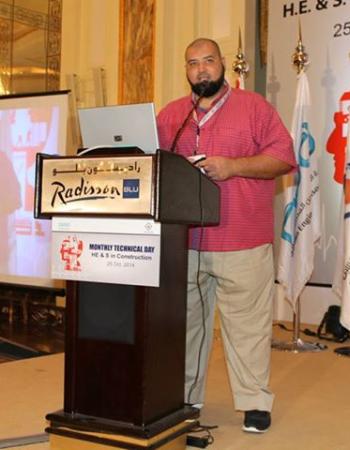Effect of safety shoes type, lifting frequency, and ambient temperature on subject's MAWL and physiological responses
A.Al-Ashaik, Riyad . 2015
Objective
The purpose of this paper is to evaluate the lifting capabilities of individuals while wearing safety shoes in a hot environment and to investigate the behavior of the physiological responses induced by the lifting process associated with those variables.
Methods
In order to achieve the objectives of this research, two sequential studies were conducted. The first part was an acclimatization and training program followed by a psychophysical experiment. Seven male workers participated in this experiment from the university. A three-way repeated measures design, with three independent variables and seven response variables, was utilized in this study. The independent variables studied in the psychophysical experiment were: 1) environmental temperature (20 and 30 °C WBGT), 2) lifting frequency (1 and 5 lifts/min), and 3) safety shoes (light-duty, medium-duty and heavy-duty). The response variables for this experiment were: 1) maximum acceptable weight of lift (MAWL), 2) heart rate, 3) aural-canal temperature, 4) muscle electromyography (EMG) of four muscle groups (biceps brachii, anterior deltoid, trapezius, and erector spinae), 5) rating of perceived exertion, 6) rating of thermal sensation and7) safety shoes discomfort rating.
Results
The psychophysical experiment results showed that the weights selected by participants at higher levels of the independent variables were significantly less than those selected at lower levels of the independent variables. Some of the interaction effects were also significant.
Conclusion
This study found evidence that – in addition to lifting frequency, which is well reported in the literature – heat stress increases the workload intensity in manual lifting tasks influencing the psychophysical selection of MAWL and the physiological responses of the human body represented in aural-canal temperature, heart rate and muscular activities. The study findings demonstrated the necessity of accounting for work environmental temperature and type of worn safety shoes, which is a safety requirement by most employers, when calculating the recommended weight limits.
Practitioner summary
Most of the manual materials handling studies had investigated worker's capacity to perform lifting tasks in different environmental conditions not considering the effect of wearing safety shoes. This research fills the gap by presenting safety guidelines regarding lifting tasks in a hot environment while wearing safety shoes.

BACKGROUND: Many research studies require recruiting heat-acclimatized workers to participate in heat-stress experiments and application fields. A reliable heat acclimatization program for workers…

Objective
The purpose of this paper is to evaluate the lifting capabilities of individuals while wearing safety shoes in a hot environment and to investigate the behavior of the…

BACKGROUND: Human responses at work may exhibit nonlinear properties where small changes in the initial task conditions can lead to large changes in system behavior. Therefore, it is important to…

